What is a Split-Phase Inverter Charger?
A split-phase inverter charger is a sophisticated power conversion device designed to provide reliable energy solutions, particularly in residential and commercial settings. At its core, this technology generates two 110V or two 120V alternating current (AC) lines that are precisely 180 degrees out of phase with one another. This arrangement allows for the effective distribution of power across various appliances that may have differing voltage requirements.
In traditional electrical systems, a split-phase configuration serves the purpose of enabling a balanced load while supplying the necessary voltage to connected devices. The split-phase inverter charger typically employs a combination of battery storage and inverter technology to convert direct current (DC) from batteries into usable AC power. This dual functionality not only allows for charging of batteries but also ensures that power can be readily supplied when needed, making it a versatile solution for energy management.
The functionality of a split-phase inverter charger can be particularly advantageous in scenarios where there is a need for two separate circuits of 120V. For instance, in residential applications, this technology can power standard household appliances on one line while supporting additional equipment, like air conditioning units or electric heaters, on another. This capability allows homeowners and business operators to efficiently manage their energy consumption while maintaining a balanced load across the inverter charger.
Overall, the split-phase inverter charger stands out as an essential component in modern power solutions. Its ability to generate two out-of-phase 120V lines makes it an ideal choice for various applications, where the versatility and reliability of power distribution are paramount. As energy demands continue to evolve, understanding the role and functionality of split-phase inverter chargers becomes increasingly important for effective energy management.
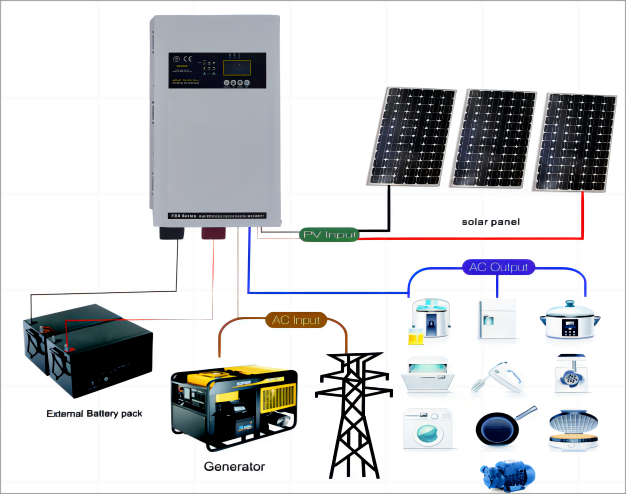
Differences Between Single-Phase and Split-Phase Inverter Chargers
In the realm of inverter chargers, understanding the distinctions between single-phase and split-phase systems is crucial for selecting the appropriate configuration based on specific energy needs. Single-phase inverter chargers are designed to provide a singular 120V output. This setup generally suffices for smaller appliances or basic systems; however, it poses limitations for users who require more substantial power for larger devices. Consequently, when the demand for electricity increases, a single-phase inverter may struggle to accommodate the needs of more demanding equipment.

In contrast, split-phase inverter chargers enhance flexibility and power distribution by supplying dual 120V outputs. This configuration can either be utilized independently or combined to create a 240V output. With this capability, split-phase systems can cater to a wider array of appliances, including those that require higher voltage to operate efficiently, such as electric stoves, dryers, and central air conditioning units. This versatility in voltage options allows users to seamlessly integrate various devices into their power solutions.
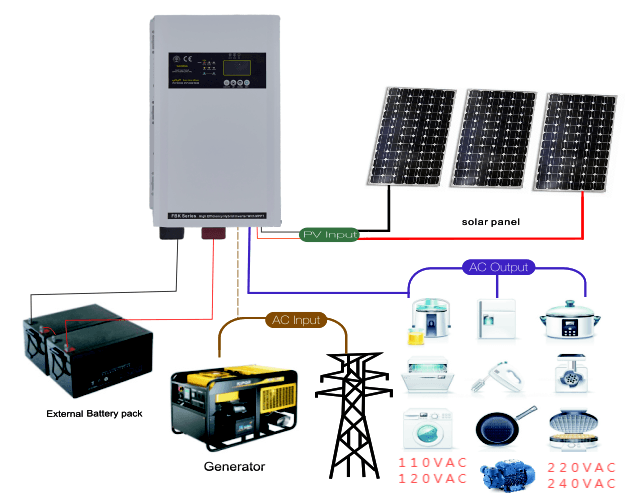
Furthermore, the efficiency of split-phase inverter chargers is a notable advantage. By balancing the load across two phases, they can reduce the strain on each individual output, leading to potentially increased longevity of both the inverter system and the appliances connected to it. In essence, while single-phase inverter chargers may suffice for basic power needs, split-phase systems are undoubtedly more suitable for environments where diverse and demanding loads are present. With the growing reliance on various electrical appliances, understanding these differences plays a vital role in making informed decisions about energy solutions.
How Does a Split-Phase Inverter Work?
A split-phase inverter operates by utilizing a central transformer that converts the input voltage from a single-phase power source into two separate 120V lines. This arrangement is essential in split-phase systems, particularly in North America, where the typical residential electrical service is designed to provide two 120V hot wires that are out of phase with each other by 180 degrees. The inverter’s design allows it to effectively manage this transformation, subsequently offering enhanced power distribution for a variety of applications.
The process begins when the inverter receives direct current (DC) from a battery or solar panel. Through an inverter’s conversion mechanism, this DC is transformed into alternating current (AC). The central transformer plays a pivotal role at this point, dividing the AC output into two distinct channels. Each of these channels carries 120V, which can be utilized to power standard household appliances, lights, and more. Notably, the two lines created also allow for the easy combination of the output to provide a higher voltage of 240V when required. This is particularly advantageous for heavy-duty equipment such as electric dryers or large air conditioning units that necessitate greater power.
The operational advantages of a split-phase inverter setup extend beyond just the generation of multiple voltage outputs. By making efficient use of two 120V lines, households can balance loads more effectively, minimizing the risk of overloading a single phase. This balanced load distribution leads to enhanced energy efficiency and improved performance of the appliances being powered. Additionally, split-phase systems often exhibit increased reliability and reduced strain on individual circuits, which contributes to their rising popularity in modern electrical setups. In essence, the workings of a split-phase inverter not only facilitate versatile power solutions but also provide greater reliability for diverse power needs.
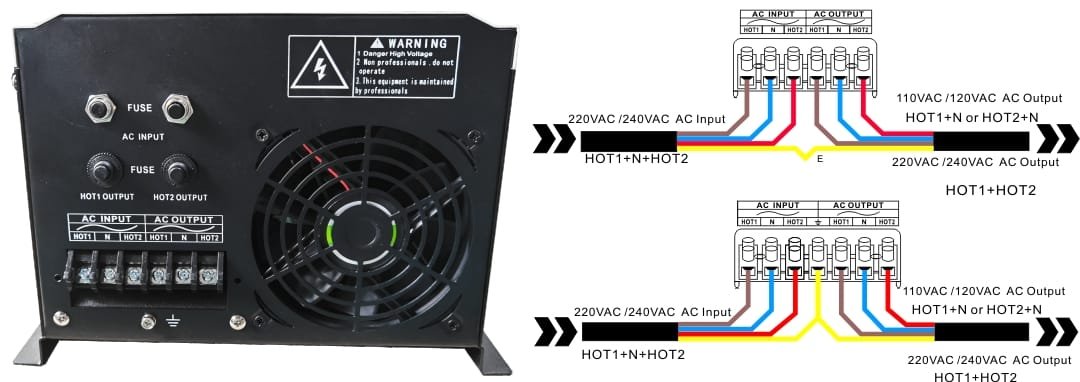
Appliances Compatible with Split-Phase Output
Split-phase inverter chargers are becoming increasingly popular due to their efficient power delivery mechanism, which allows them to support a wide array of appliances. Understanding the types of devices that can be powered by these systems is essential for making informed decisions about energy use and backup power solutions. Typically, appliances can be grouped into two categories based on their voltage requirements: those that operate on 110V-120V outputs and those that require 220V-240V outputs.
The first category includes small household gadgets and appliances that commonly operate at lower voltages. Devices such as lamps, televisions, personal computers, and kitchen appliances like microwaves and toasters fall into this group. These appliances are prevalent in everyday homes and are typically the first devices that consumers consider when looking for alternate power sources. In most residential settings, split-phase inverter chargers can effectively manage the load of these 110V-120V devices, ensuring they receive consistent and reliable power.
On the other hand, the second category includes more substantial equipment requiring higher voltages to function correctly. This includes heavy-duty tools, industrial machinery, electric water heaters, and central air conditioning units, which usually operate on 220V-240V outputs. These appliances demand a significant amount of power, making a split-phase inverter charger an advantageous solution for users who need to operate heavy machinery or keep essential systems running during outages.
The versatility of split-phase inverter chargers is evident in their ability to cater to both categories of appliances effectively. Whether for residential use or industrial applications, understanding the compatibility of various devices with split-phase outputs is crucial for optimizing energy usage and maintaining efficiency in power management. By making informed choices based on appliance voltage requirements, consumers can enhance their energy strategies with reliable split-phase systems.
Benefits of Using a Split-Phase Inverter
Split-phase inverter chargers have gained popularity due to their numerous advantages in providing reliable and efficient power solutions. One of the primary benefits of a split-phase inverter is its versatility in accommodating both 120V and 240V appliances. This feature allows users to power a wide range of devices without needing separate inverters or complicated configurations. For households that utilize a combination of standard and high-voltage appliances, split-phase systems offer a seamless solution that simplifies energy management.
Another significant advantage is the balanced load distribution that split-phase inverters facilitate. By dividing the electrical load equally between the two phases, these inverters reduce the overall electrical strain on the existing power network. This balanced operation not only enhances energy efficiency but also prolongs the lifespan of appliances and devices connected to the system. With lower strain, the likelihood of electrical surges or failures diminishes, thus contributing to a more stable power supply.
Furthermore, split-phase inverter chargers demonstrate exceptional adaptability, particularly for regions with diverse power needs. In areas where electricity supply may be intermittent or unreliable, these inverters serve as an efficient all-in-one energy solution. They can effectively manage solar energy generation, battery storage, and grid connections, allowing users to maintain a consistent power supply regardless of external conditions. Ultimately, whether for residential or commercial applications, split-phase inverters deliver a robust and flexible approach to energy management, making them a preferred choice for many.
Distinguishing 120-degree and 180-Degree Power in South America
In South America, the electrical power systems vary significantly, primarily due to the differing phase configurations utilized across the region. Among these, the 120-degree and 180-degree phase differences are pivotal in understanding how inverter installation and compatibility function within diverse power applications. The distinction between these two configurations is crucial for ensuring optimal performance and reliability of split-phase inverter chargers.
The 120-degree power configuration refers to a system where three-phase electrical power is generated and distributed with a phase difference of 120 degrees between each of the three phases. This type of phase arrangement is commonly associated with larger industrial and commercial applications. It supports a balanced load across all phases, allowing for more efficient power distribution and reduced losses. Conversely, the 180-degree phase configuration, often utilized in single-phase systems, features a more straightforward approach, with a two-wire system that alternates between positive and negative voltages. This is prevalent in residential applications where the increased simplicity can result in easier installation and lower costs.
The choice between 120-degree and 180-degree power systems directly impacts the design and installation of inverter chargers. For instance, split-phase inverter chargers compatible with 180-degree systems typically require a straightforward inverter configuration that supports dual voltage outputs for optimal home or small business use. In contrast, those designed for 120-degree systems may necessitate advanced configurations to properly balance the load among the three phases, ensuring efficiency and minimizing potential disruptions.
Ultimately, understanding the implications of these phase configurations is vital for selecting the appropriate inverter systems for specific needs within South America. The right choice can enhance the reliability and effectiveness of power solutions, directly impacting efficiency in both residential and commercial applications.
120-degree waveform
Understanding the 180-Degree Phase (Split-Phase) Configuration
The 180-degree phase configuration, also known as split-phase power, is widely utilized in residential electrical systems across the United States and various South American countries. This configuration plays a crucial role in providing reliable and efficient power solutions for homeowners. By employing two alternating currents that are 180 degrees out of phase, split-phase systems can deliver a balanced load, ensuring an even distribution of power throughout the home.
In practical terms, a split-phase system typically utilizes a center-tapped transformer, which yields three output wires: two hot wires and one neutral. The voltage present between the two hot wires is 240 volts, while the voltage from each hot wire to the neutral wire measures 120 volts. This dual voltage output provides versatility in handling various appliances and devices. Household equipment that requires higher voltage, such as electrical dryers and heating systems, can operate seamlessly at 240 volts, while standard outlets for lighting and general-purpose devices operate at the more common 120 volts.
The applications of the 180-degree phase configuration extend to many aspects of residential power management. It simplifies the wiring system within the home, reducing installation complexity and costs. The split-phase design also enhances safety measures since it allows for the distribution of loads between the two phases, minimizing the risk of overloading a single line. Moreover, understanding the split-phase configuration is imperative for effective inverter utilization. For instance, in inverter systems, achieving the correct phase alignment ensures optimal performance and efficiency. This understanding is essential for anyone looking to integrate a split-phase inverter charger into their energy solution, as it fundamentally supports how the system processes and delivers electricity to meet residential demands.
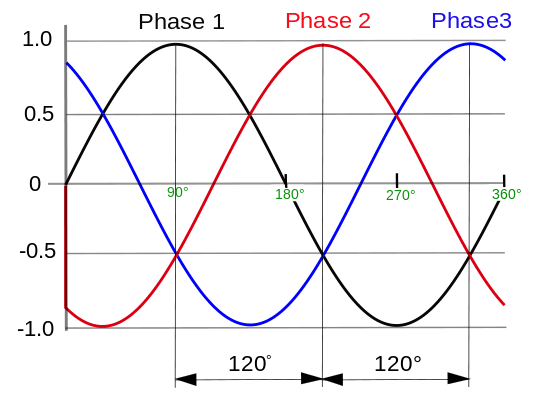
Triangle connection:
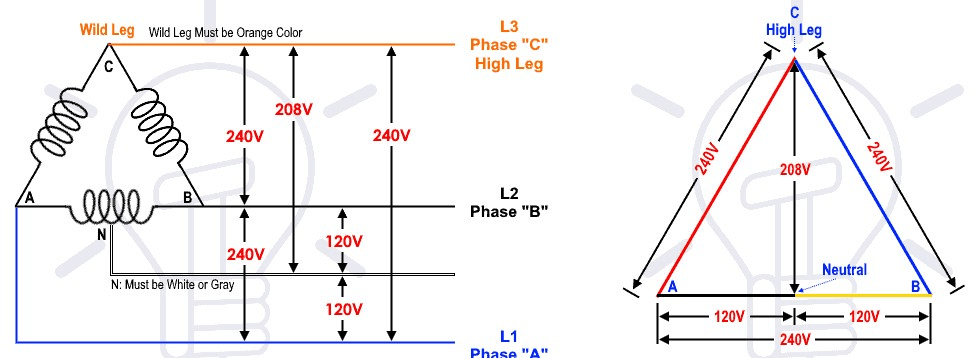
∵UAB=UA, UBC=UB, UCA=UC
∴UP=UL, line voltage=phase voltage
∴UAB=UAN*2, UAN=UAB/2
∴△φ=180°
When the inverter inputs the line voltage, it can be connected to the N line.
If :HOT1+ HOT2 Voltage≈(HOT1+N)x2←
AC Input Phase Voltage equal toΔφ=180° Please connect Hot1+N+Hot2
Understanding the 120-Degree Phase (Three-Phase) Configuration
The 120-degree phase configuration is a prevalent choice in industrial applications, specifically designed to meet the demands of large-scale energy needs. This system operates on a three-phase electrical supply, where each phase is spaced 120 degrees apart, resulting in a continuous and more balanced power output. This configuration provides a few critical advantages over residential split-phase systems, which typically utilize only two phases.
One of the most significant benefits of the three-phase system is its ability to deliver a constant power supply. In a three-phase configuration, the voltage peaks of the phases occur at different times, ensuring that power is consistently available without significant dips or fluctuations. This characteristic makes three-phase power ideal for running heavy machinery, industrial motors, and other high-demand equipment. Furthermore, the higher efficiency in transmission minimizes energy loss, making it a more economical choice for large facilities.
Additionally, the voltage characteristics of a three-phase system significantly enhance its usability in industrial contexts. Typically, a three-phase supply can be found in configurations such as 208V, 400V, or higher voltage ratings, allowing for the flexibility necessary to power varied industrial processes. In many manufacturing environments, machinery and equipment are specifically designed to harness the three-phase power supply, ensuring optimal performance and longevity.
These systems are commonly used in environments such as factories, commercial buildings, and large-scale service stations where substantial energy consumption is a norm. The integration of a three-phase electrical supply can accommodate numerous load-bearing devices, providing the resilience and reliability that modern industries require. In contrast to residential split-phase systems, which are adequate for lower power requirements, the 120-degree phase configuration is indispensable in meeting industrial energy demands efficiently.
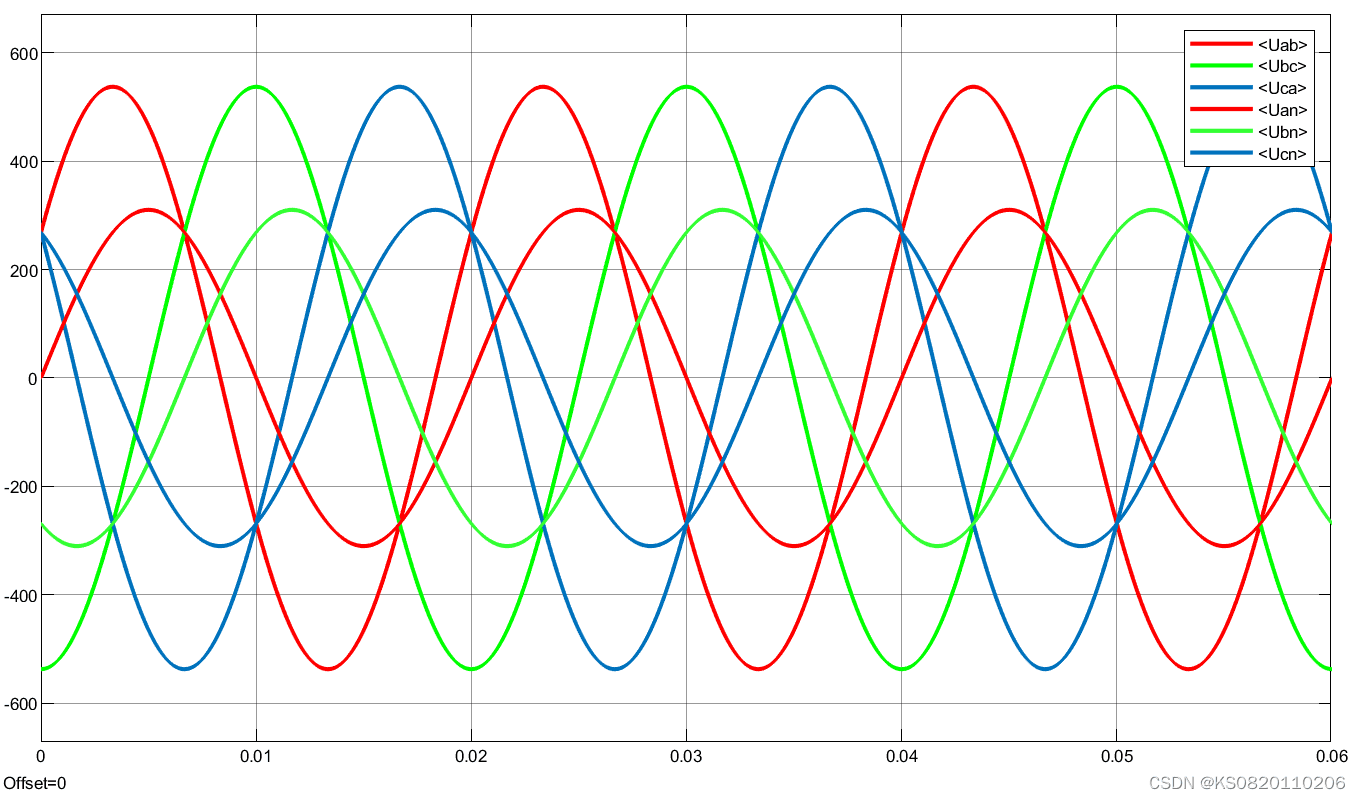
Star connection (Y connection):

∵UAB+UB-UA=0, UBC+UC-UB=0, UAC+UC-UA=0
∴UAB=UA-UB, UBC=UB-UC, UAC=UA-UC
∴UAB=1.732*UAN, UAN=UAB/1.732, line voltage=1.732*phase voltage∴△φ=120°
Please check the AC Input Voltage before connecting our split-phase inverter AC input!!!!!
If :HOT1+ HOT2 Voltage≈(HOT1+N)x1.732<(208VAC≈120VAC*1.73)
Conclusion and Future Perspectives on Split-Phase Inverter Chargers
Understanding split-phase inverter chargers is essential for individuals and businesses seeking reliable power solutions in today’s dynamic energy landscape. These devices play a crucial role in converting and managing electricity, particularly in regions where the power supply is unpredictable or in locations that rely heavily on renewable energy sources. The ability of split-phase inverter chargers to provide stable and efficient power makes them a vital component in both residential and industrial applications.
As we look to the future, the evolution of inverter technology, including split-phase models https://swninverter.com/product-category/split-phase-inverter/, is poised to cater to the growing demand for sustainable energy solutions. Emerging trends suggest an increasing integration of renewable energy sources, such as solar and wind, with inverter systems. This shift will not only enhance the efficiency of power utilization but also contribute significantly to reducing carbon footprints. Moreover, advancements in battery storage technologies are expected to complement split-phase inverter chargers, allowing for improved energy management and storage capabilities.
Furthermore, the ongoing innovation in smart grid technology will also influence the functionality and applicability of split-phase inverter chargers. By syncing with smart meters and home automation systems, these devices can optimize power consumption, leading to more efficient energy use. Therefore, consumers and businesses alike need to stay informed about the latest upgrades in inverter technology and renewable energy practices.
In summary, split-phase inverter chargers hold critical importance in the broader context of energy solutions. Their efficiency and reliability in both household and industrial environments continue to make them relevant. As renewable energy integration progresses and technology advances, split-phase inverter chargers will undoubtedly evolve, solidifying their place in the future of sustainable energy systems.

